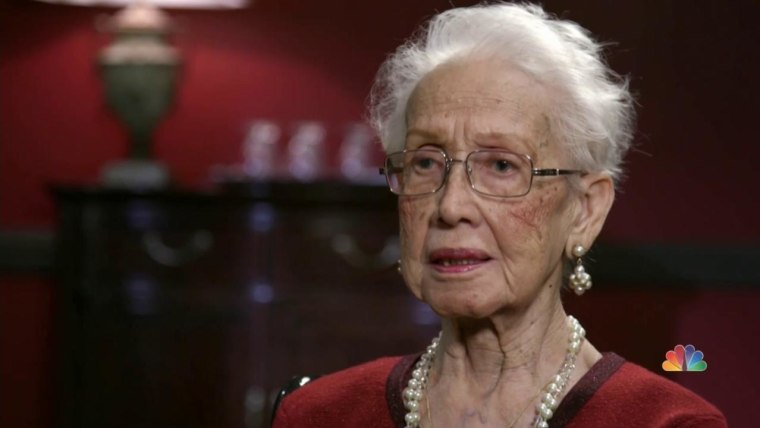Katherine Johnson, one of the NASA mathematicians depicted in “Hidden Figures,” died Monday, the administrator of NASA said. She was 101.
Johnson “was an American hero and her pioneering legacy will never be forgotten,” NASA administrator Jim Bridenstine wrote on Twitter.
Johnson was portrayed by Taraji P. Henson in the Oscar nominated 2016 film “Hidden Figures” about trailblazing black women whose work at NASA was integral during the Space Race.
The Morning Rundown
Get a head start on the morning’s top stories.
The film also stars Octavia Spencer as mathematician Dorothy Vaughan and Janelle Monáe as engineer Mary Jackson.
Johnson began working at NASA’s predecessor, the National Advisory Committee for Aeronautics’ in 1953 at the Langley laboratory in Virginia. In her role there, she did trajectory analysis for Alan Shepard’s 1961 mission Freedom 7, which was America’s first human spaceflight, according to NASA.
She was also the first woman in the Flight Research Division to receive credit as an author of a research report for her work with Ted Skopinski on detailing the equations describing an orbital spaceflight.
She was best-known though for work that greatly contributed to the first American orbital spaceflight, piloted by John Glenn.
The 1962 flight required the construction of a “worldwide communications network” linking tracking stations around the world to computers in Washington, D.C., Cape Canaveral, and Bermuda.
But astronauts weren’t keen on “putting their lives in the care of the electronic calculating machines, which were prone to hiccups and blackouts,” according to NASA. So Glenn asked engineers to “get the girl,” referring to Johnson, to run the computer equations by hand. “If she says they’re good,’” Johnson remembered Glenn saying, “then I’m ready to go.”
“Glenn’s flight was a success, and marked a turning point in the competition between the United States and the Soviet Union in space,” NASA says.
But “when asked to name her greatest contribution to space exploration, Katherine Johnson talks about the calculations that helped synch Project Apollo’s Lunar Lander with the moon-orbiting Command and Service Module,” according to NASA.













